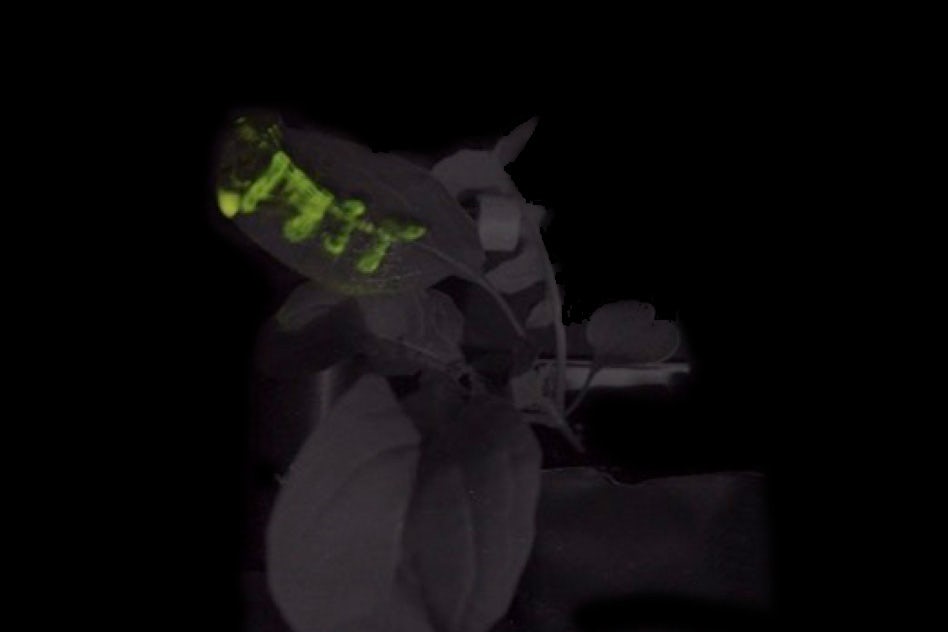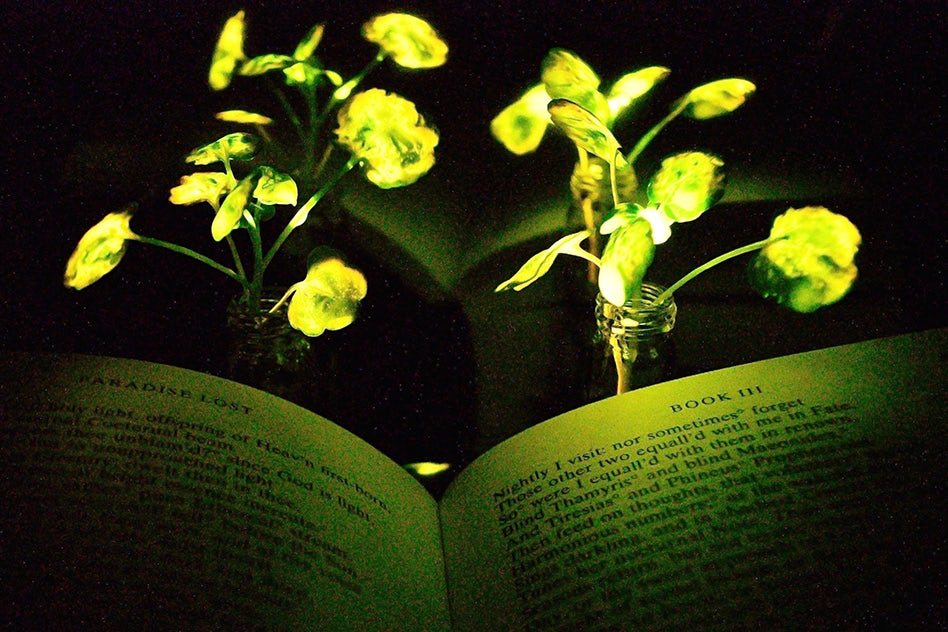Creation of Autoluminescent Plants, For Replace Electrical Lighting
Harnessing bioluminescence to light the night sans electricity isn’t a new concept, but tinkering with Mother Nature’s genes has never been easy- that is, until now. That’s why you could soon find yourself reading a bedtime book by the soft green light of a glow-in-the-dark plant.
MIT engineers have taken a critical first step toward making this a reality by embedding specialized nanoparticles into the leaves of a watercress plant; they induced the plants to give off dim light for nearly four hours. They believe that, with further optimization, such plants will one day be bright enough to illuminate a workspace.
The work comes from the same “plant nanobionics” team that recently designed explosive-detecting spinach and leaf sensors that can alert farmers at the first sign of thirsty crops. In this case, the researchers wanted to tackle lighting, which accounts for about 20 percent of energy consumption worldwide.
“The vision is to make a plant that will function as a desk lamp — a lamp that you don’t have to plug in. The light is ultimately powered by the energy metabolism of the plant itself,” says Michael Strano, the Carbon P. Dubbs Professor of Chemical Engineering
at MIT and the senior author of the study.Researchers infused kale, watercress, argula and spinach with luciferase — the enzyme that makes fireflies glow. Then they dunked the plants in a solution containing more luciferase and luciferin — the molecule that reacts with luciferase to spark the light — and applied pressure. The pressure allowed the chemical mixture to sink into the plants’ tiny pores, where the luciferase and luciferin interacted to give the leafy green its glow.
The team made the plants glow for about 45 minutes in the first experiments. But by the time of the paper’s publishing, they reported greens that can glow for up to three and a half hours.
The watercress had an especially strong reaction to the chemical formula, producing brightness comparable to half of a one-microwatt LED light.

Luciferase is an enzyme composed of amino acids like any other protein, and it doesn’t actually produce any light. It oxidizes the luciferin molecules, causing them to produce light as they decay back to their ground state. The co-enzyme A in the nanoparticles is there to clear out reactant byproducts that can inhibit the interaction of luciferase and luciferin.
After packaging up the nanoparticles, the specimens when submerged and subjected to high pressure causes the nanoparticles to diffuse into the plants. Over time, the nanoparticles release molecules into the plant where they are taken up by the cells. Once inside the cells, luciferase and luciferin do what they’d do anywhere else — they glow.
Previous efforts to produce light-emitting plants have relied upon expensive and complicated genetic engineering. Having plants create their own luciferase is better for long-term functionality, but the light produced by such processes is extremely dim and it’ll only work for select plants with well-understood genomes. The nanobionics approach yields brighter light, and it’s simple to do.
The researchers believe they can extend the time as well as increase the brightness in future. It’ll have to get about 1,000 times brighter to allow you to comfortably read a book by plant light. The goal is to make the plants bright enough to illuminate a room with nanoparticles that last the lifetime of the plant.
“Our target is to perform one treatment when the plant is a seedling or a mature plant, and have it last for the lifetime of the plant,” Strano says. “Our work very seriously opens up the doorway to streetlamps that are nothing but treated trees, and to indirect lighting around homes.”
“Plants can self-repair, they have their own energy, and they are already adapted to the outdoor environment. We think this is an idea whose time has come. It’s a perfect problem for plant nanobionics.” Strano said.
Another feature the researchers have already demonstrated is turning the light off by introducing a fourth molecule. This could eventually create plants that can shut off their light in response to an outside stimulus like sunlight, researchers say.




























/cdn.vox-cdn.com/uploads/chorus_asset/file/9875865/glowing_watercress_lamp_bioluminescent_mit_2.jpg)
/cdn.vox-cdn.com/uploads/chorus_asset/file/9875869/glowing_watercress_lamp_bioluminescent_mit_1.jpg)


